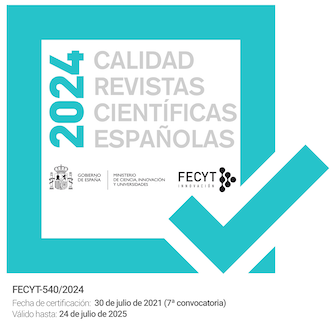Incorporated Vision: Artistic Critiques of the Development Discourse in Latin America
DOI:
https://doi.org/10.30827/rl.v0i13.3788Keywords:
Latin American, art, body, vision, development discourseAbstract
This essay analyzes three key works of Latin American art in the 1960s and 1970s: La Destrucción (1963) by Argentine artist Marta Minujín, La Muerte del Justo y la Muerte del Pecador (1973) by the Colombian artist Beatriz González, and Mandala (1969) by Brazilian artist Lygia Clark. These works blur the lines between body of the artist, the spectator or participant and the work of art, making intelligible the somatic, historical, social, and ideological constitution of vision. In doing so, these works puncture the myth of the disinterested or objective gaze of scientific rationalism that buttressed development discourse and thus Cold War power relationsDownloads
References
Bois, Yve-Alain and Lygia Clark (1994). “Nostalgia of the Body,” October,Vol. 69 (Summer), 85-109.
Calirman, Claudia (2012). Brazilian Art under Dictatorship: Antonio Manuel,Artur Barrio, and Cildo Meireles, Duke University Press.
Dunn, Christopher (2001). Brutality Garden, Tropicália and the Emergence of Brazilian Counterculture, University of North Carolina Press.
Escobar, Arturo (1995). Encountering Development: The Making and Unmaking of the Third World, Princeton N.J.: Princeton University Press.
Foucault, Michel (1982). “The Subject and Power,” Critical Inquiry, Vol. 8, No. 4 (Summer), 777-795.
Freire, Paolo (1968) 1996. Pedagogy of the Oppressed. London: Penguin Education.
Giunta, Andrea (2001). Vanguardia, internacionalismo y política: Arte argentino en los años sesenta, Buenos Aires, Barcelona, México: Paidós.
Katzenstein, Inés and Andrea Giunta (2004). Listen Here Now! Argentine Art of the 1960s Writings of the Avant-Garde. New York: The Museum of Modern Art.
LaDuke, Betty (1984). “Women and Art in Cuba: ‘Feminism Is Not Our Issue,’” Woman’s Art Journal, Vol 5, no. 2 (Autumn 1984 – Winter 1985), 34-40.
Lindauer, Margaret (1999). Devouring Frida: The Art History and Popular Celebrity of Frida Kahlo. Hanover: University Press of New England.
McCormack, Sabine (1991). Religion in the Andes: Vision and Imagination in Colonial Peru. Princeton. N.J.: Princeton University Press.
Mohanty, Chandra (1991). “Under Western Eyes: Feminist Scholarship and Colonial Discourses” in Third World Women and the Politics of Feminism. Mohanty, Russo and Torres eds. Bloomington and Indianapolis, Indiana University Press, 51-79.
Noorthoorn, Victoria, Minujín, Marta, and Museo de Arte Latinoamericano de Buenos Aires et al. (2010). Marta Minujín Obras 1959-1989, Buenos Aires: MALBA- Fundación Constantini.
O’Connor, Sister Mary Catherine (1942). The Art of Dying Well: The Development of the Ars Moriendi. New York: Columbia University Press.
Quiles, Daniel (2008). “Burn Out My Potentiality: Destruction and Collectivity in Greco and Minujín.” Beginning with a Bang! From Confrontation to Intimacy: Argentine Contemporary Artsits 1960-2007. New York: The Americas Society, 69-80.
Reyes, Ana María (2011). “Art at the Limits of Modernization: The Artistic Production of Beatriz González during the National Front in Colombia” Ph.D. Dissertation. Chicago: University of Chicago.
Rodríguez, Víctor Manuel (1996). “Los espejos de Beatriz González: modernismo,postcolonialidad e identificación.” In Historia Critica Revista del Departamento de Historia de la Facultad de Humanidades y Ciencias Sociales de la Universidad de los Andes, no. 13 (July–December), 21–31.
Sachs, Wolfgang (1992). A Development Dictionary, London: Zed Books.
Shildrick, Margrit and Janet Price (1999). “Openings on the Body: A Critical Introduction” in Feminist Theory and the Body: A Reader. New York: Routledge, 1-15.
Downloads
Published
How to Cite
Issue
Section
License
Revista Letral is an open access journal under a Creative Commons Atribución-NoComercial 4.0 license.
The works published in this journal may be reused, distributed and publicly presented for non-commercial purposes, provided that: cite the authorship and the original source of the publication (journal, publisher and URL of the work).
We strongly recommended you to share our published articles in social and scientific networks, institutional and public repositories, personal or institutional websites, blogs, Google Scholar, ORCID, ResearchID, ScopusID, etc.
The journal allow the author(s) to hold the copyright and to retain publishing rights without restrictions.
We are completely free, both for readers and authors.














